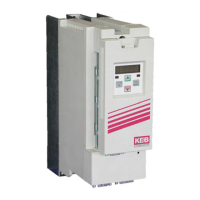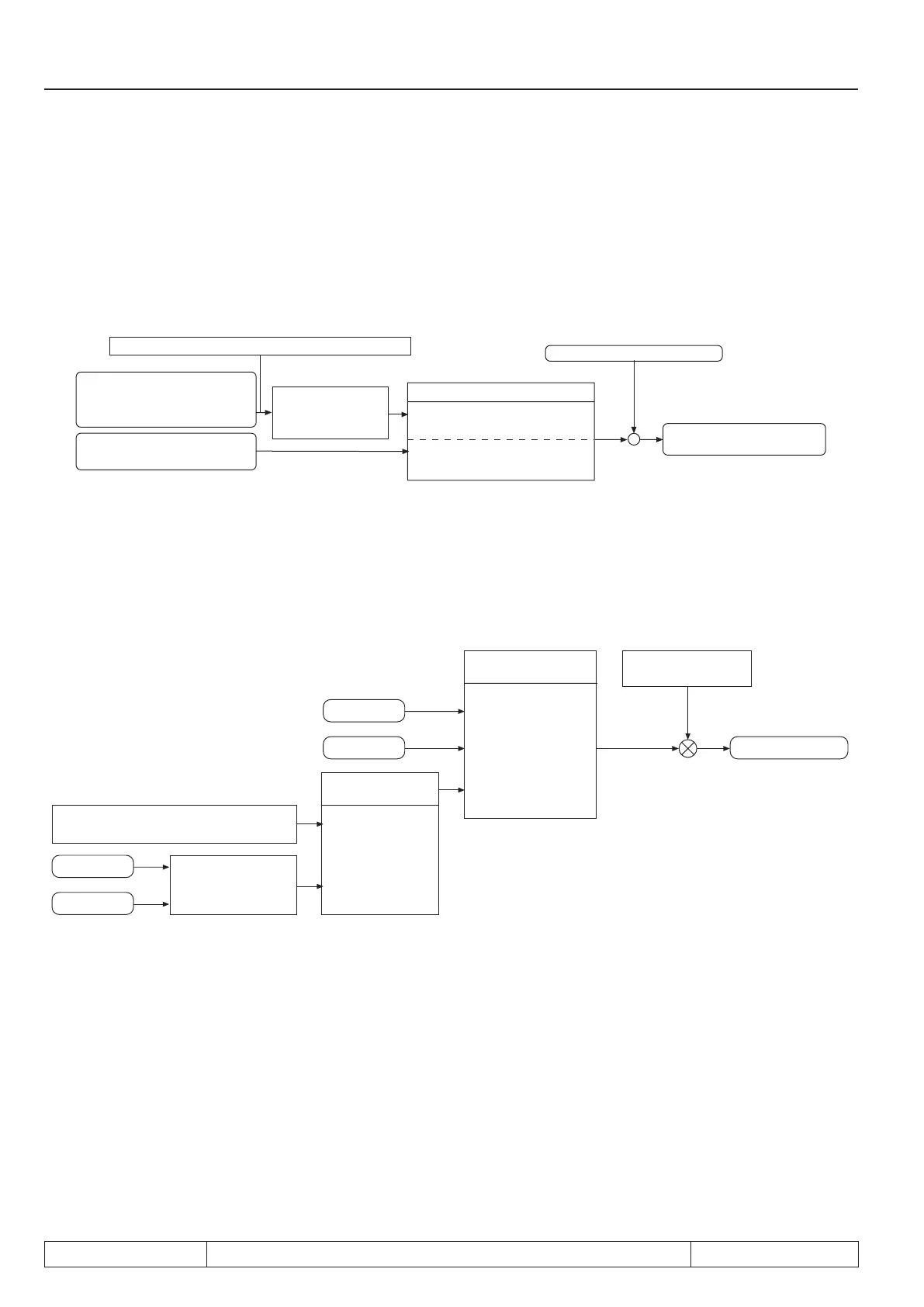Page 7.13 - 34 COMBIVERT F5-A, -E, -H © KEB, 2012-10
Protective functions
400V class = 240V DC; 600V class = 360V DC)
Auto starting voltage (Pn.46)
The auto starting voltage is adjusted with Pn.46 in a range of 50...90% (Default: 80 %) of the rated DC link
voltage (ru.68).
The rated DC link voltage is measured at „Power on“ and displayed in ru.68.
Picture 7.13.10.a Starting the Power-Off function
+
-
ru.68 rated DC voltage
DC-link voltage real value
Auto-DC-link voltage
set value measured at
Power-On
Pn.45 starting voltage
200...1200 V
Pn.46 Auto starting
voltage
50...90% (80%)
Pn.44 Bit 1 starting voltage
0: auto determination of the start
voltage
2: preset the start voltage with
Pn.45
Start of power off if UZK-
actual value < start. volt.
Initial jump for generator operation (only v/f-characteristic operation)
After triggering power off rst of all the drive must be brought into regenerative operation that energy can be
regenerated into the DC link. This is achieved by making a frequency jump, so that the speed of the drive is
larger than the output rotating eld speed of the inverter.
Figure 7.13.10.b Initial jump for generator operation in 1. cycle
Pn.56 jump factor
0...800 %
Frequency jump
Motor data
Utilisation
Channel 1
Channel 2
Slip calculation
Slip calculation by the active
current
cS.01 actual source
0: Encoder channel 1
1: Encoder channel 2
2: calculated actual
value
Pn.44 bit 2
Starting jump
0: Active current I
W
4: Utilisation IS
Initial jump calculation (Pn.44 Bit 2)
The parameter Pn.44 bit 2 determines, whether the starting jump is calculated from the active current or from
the utilisation. This setting has no effect on slip regulation. Default value is the calculation of the active current
and it may come to wrong values at high harmonic content of the output current. The initial jump must be deter-
mined from the load in this case. To get proper values enter motor data into dr-parameters rst.
Jump factor (Pn.56)
By means of the jump factor the automatically determined starting jump can be adapted to the respective ap-
plication.
In case the jump factor is too small, the inverter trips to "2 Error! Undervoltage" (E.UP)!
For too great a jump factor, the inverter runs into the hardware current limitation (status value 80 "HCL"). The
control cannot work correctly, thus causing a wrong calculation of the active current!

